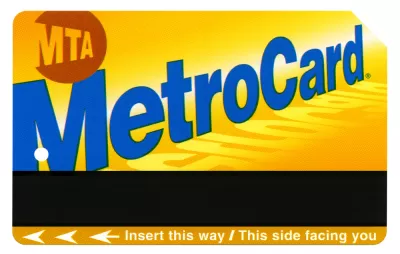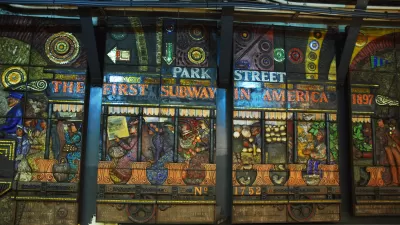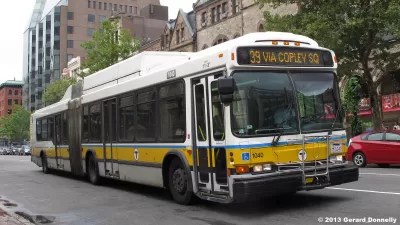A study from MIT seems to confirm that the cost of transit is depressing use of service by low-income residents, and that reduced fares help this population take the trips they currently don’t.

A randomized trial of Boston commuters showed that low-income transit users are more likely to use transit when they received a discount. The study separated a group of transit users into a group that got a discount and one that didn’t. “Unsurprisingly, people who paid half price for transit fares used transit more often: the group that received the discounted CharlieCard took, on average, about 30% more trips per week than the control group paying full price,” Christian MilNeil writes for Streetsblog Massachusetts. The findings suggest that ridership by low-income transit riders is suppressed by the cost of using services.
Interestingly, the ridership habits of the subsidized groups varied somewhat from those of other riders. "While transit agencies might be concerned that offering a discounted fare to lower-income riders might increase crowding, the study’s data show that lower-income households (with and without the discount) were actually more likely to ride during off-peak times, especially in the early-morning hours before 7 a.m.," Milneil writes. The study's authors think if the agency were to subsidize low-income riders, most of the ridership gain would be on buses and trains that currently have capacity.
FULL STORY: MIT Study: High Fares Limit Low-Income Households’ Mobility

Montreal Mall to Become 6,000 Housing Units
Place Versailles will be transformed into a mixed-use complex over the next 25 years.

Planetizen Federal Action Tracker
A weekly monitor of how Trump’s orders and actions are impacting planners and planning in America.

California High-Speed Rail's Plan to Right Itself
The railroad's new CEO thinks he can get the project back on track. The stars will need to align this summer.

Nevada Legislature Unanimously Passes Regional Rail Bill
If signed by the governor, the bill will create a task force aimed at developing a regional passenger rail system.

How Infrastructure Shapes Public Trust
A city engineer argues that planners must go beyond code compliance to ensure public infrastructure is truly accessible to all users.

Photos: In Over a Dozen Cities, Housing Activists Connect HUD Cuts and Local Issues
We share images from six of the cities around the country where members of three national organizing networks took action on May 20 to protest cuts to federal housing funding and lift up local solutions.
Urban Design for Planners 1: Software Tools
This six-course series explores essential urban design concepts using open source software and equips planners with the tools they need to participate fully in the urban design process.
Planning for Universal Design
Learn the tools for implementing Universal Design in planning regulations.
City of Camden Redevelopment Agency
City of Astoria
Transportation Research & Education Center (TREC) at Portland State University
Municipality of Princeton (NJ)
Regional Transportation Commission of Southern Nevada





























